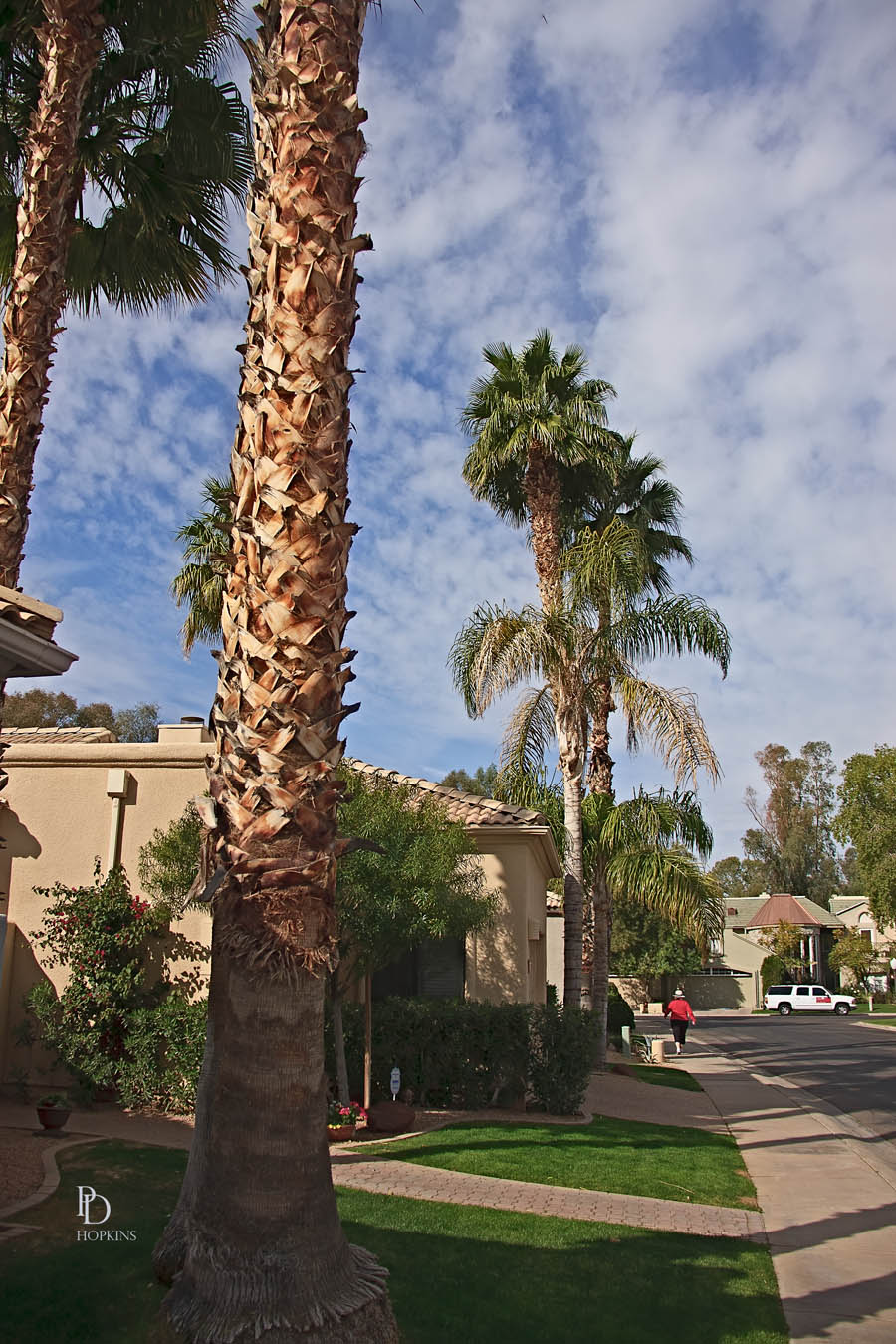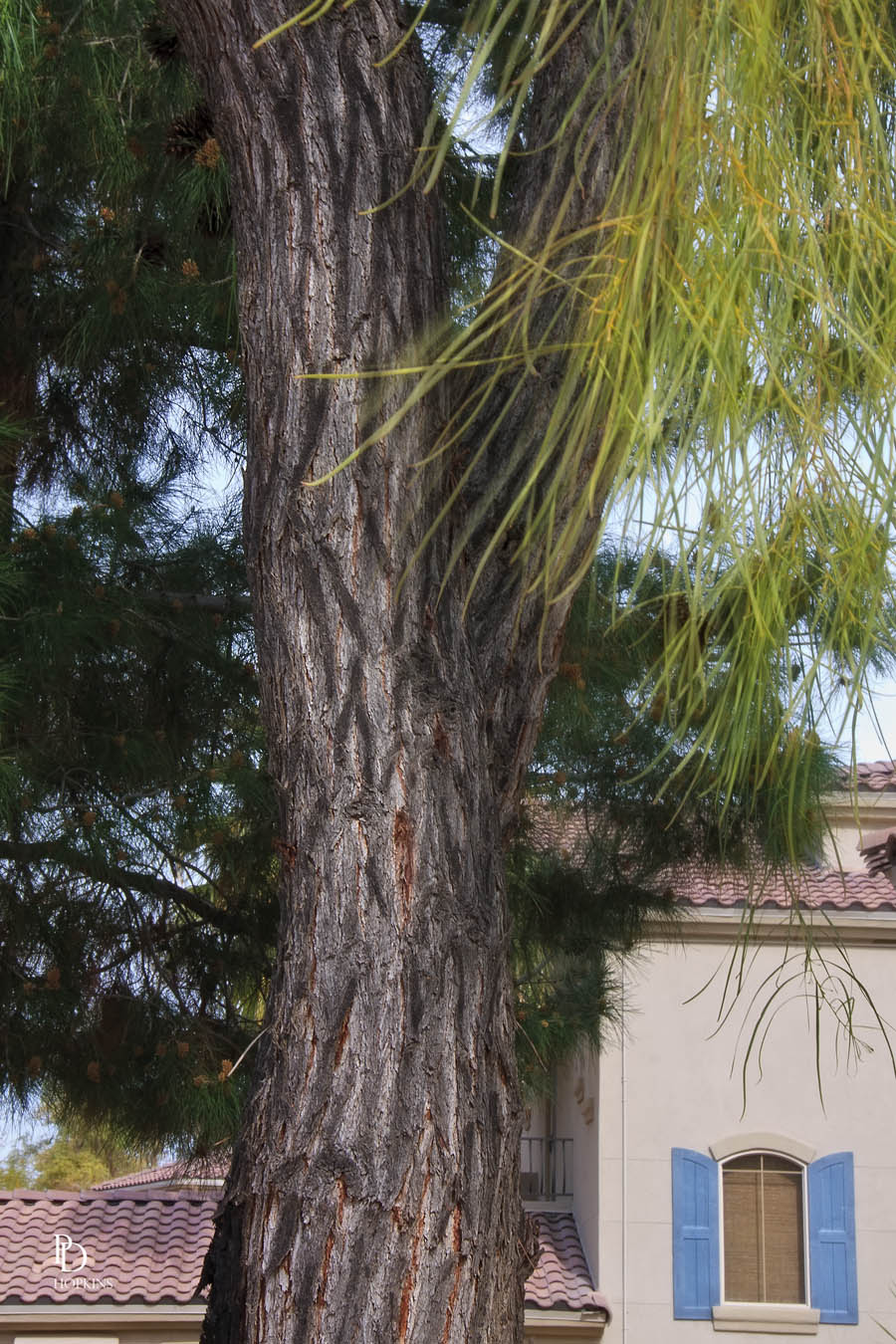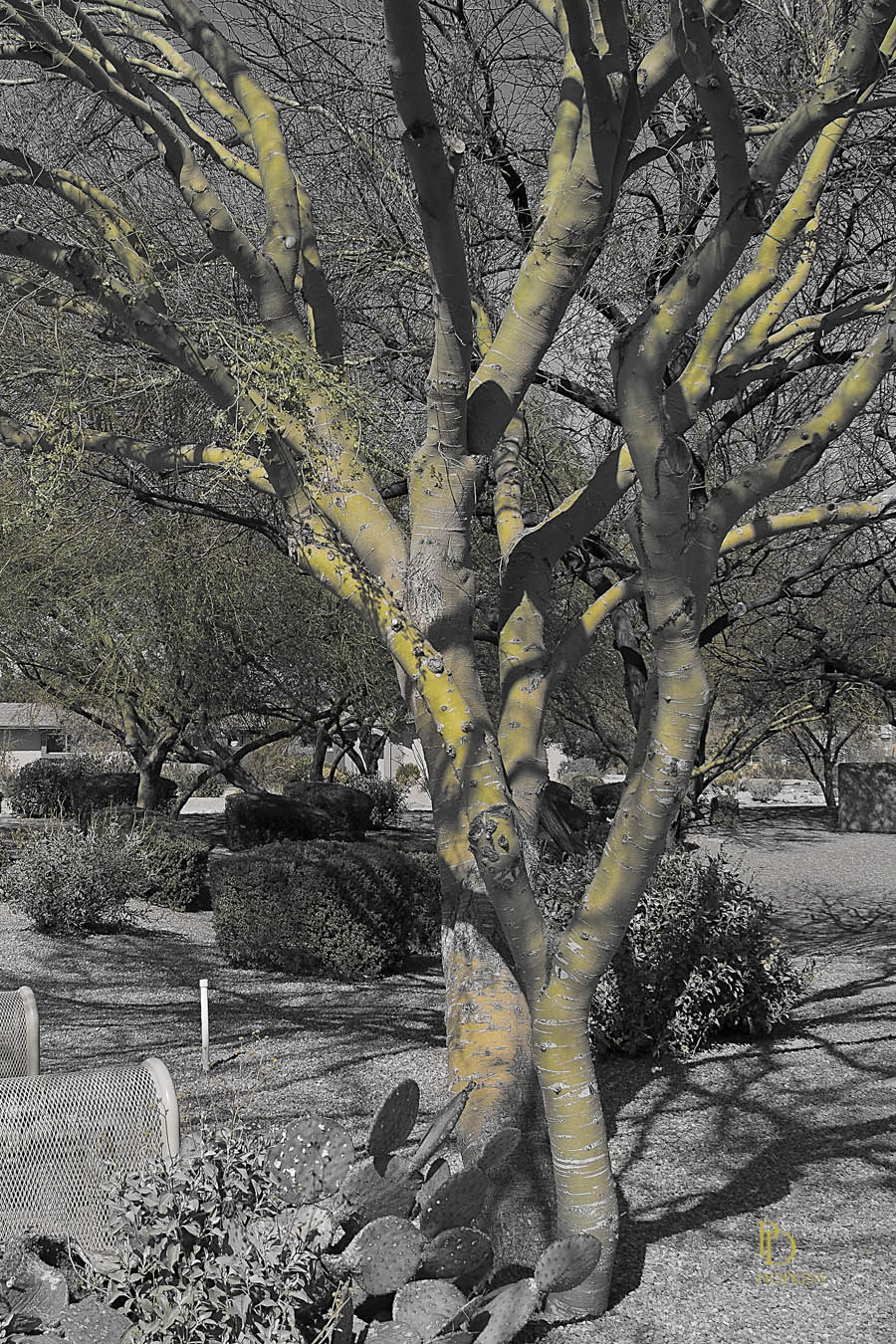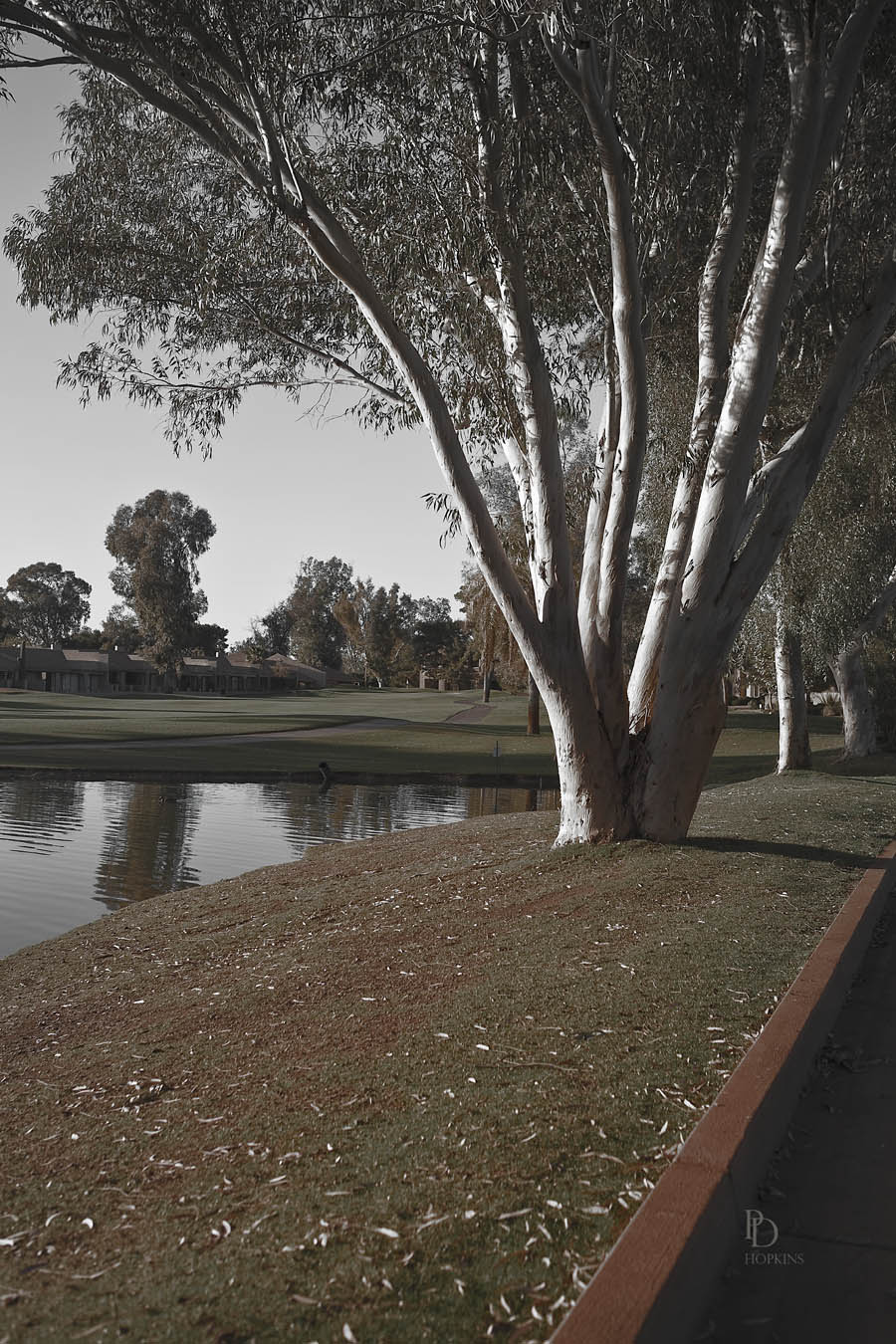We do a little walking in our Scottsdale neighbourhood for exercise. I’ve begun carrying my camera, you never know what will make an appealing photograph. In the last few days I’ve been taking shots of trees in the area, quite different obviously from the trees we have at home. I’ve tried to apply some new techniques as well, something a little different from the ordinary.
My first picture for today is a very conventional photograph, showing some beautiful palm trees along a neighbouring street. These particular trees are actually date palms, Phoenix dactylifera and are quite common in the Phoenix area.

This next picture features another commonly found tree, particularly in our neighbourhood. This one is known as a Shoestring Acacia, originally from Australia. You can see the origin of the name, the stringy looking leaves. I wished to accentuate them by elongating a little and creating a softer texture than that of the tree bark. To do that I took two exposures, one with the camera still and a second one where I moved the camera downward as I opened the shutter. I overlaid the two images in Photoshop and blended them such that only the leaves in the upper right quadrant show as slightly blurred. Here’s how it came out.

Not particularly radical. A small effect. If you look closely you can see the difference in sharpness between the bark and the leaves in the upper right quadrant.
Moving along, the next two pictures employ a more obvious adjustment. Both were done the same way, in that I created a duplicate layer atop the original image. I converted the upper layer to black and white and then blended the two layers in a way as to allow only a selected range of colour to show through from beneath. You see this technique used in magazine ads where they wish to highlight an aspect of the product. For example, red lipstick on a black and white photo of a model. In my first example, I’ve allowed the colour of the tree’s prominent feature, its green bark to show through, along with some of the leaves. This is a very popular tree in the area, the Palo Verde (literally translated as “green stick”).

Today’s last picture features another tree originating from Australia, the Eucalyptus. These trees line the roadway entering our neighbourhood. I’ve again used the same technique as for the Palo Verde tree, this time allowing some colour from the background to show through and leaving the Eucalyptus black and white. In this case, I think black and white better highlights the unique nature of this tree, particularly with the late afternoon sun shining brightly on one side of its trunks while the other is in shadow. The strong black and white contrast stands out well against the muted colours showing in the rest of the scene.

A little experimentation can be fun!
